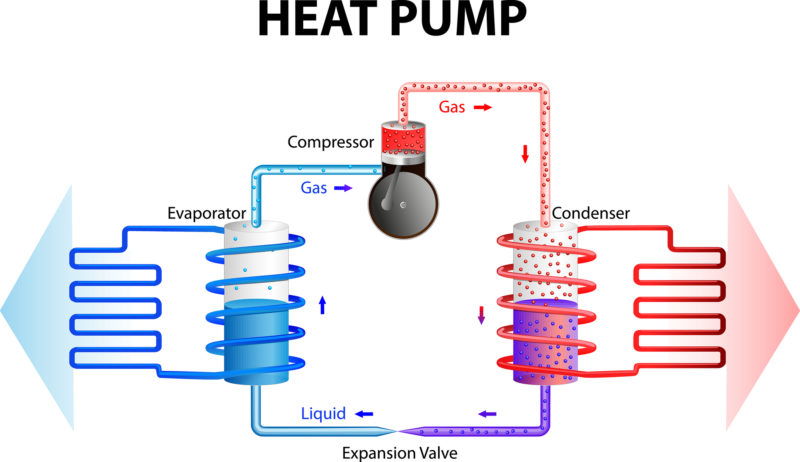In HVAC-R, making things cold is really all about heat. How many of us heard as kids, “Close the door! You’re letting the cold out!” In reality, hot and cold are simply matters of perception. Think of a cup of hot coffee and a glass of cold lemonade. If you were to leave them on the table for an hour, we would perceive the lemonade to be hot and the coffee to be cold when in fact, they are the same temperature.
With refrigeration and air conditioning, we move heat. Remember that cold is simply a perception. In air conditioning, we want to remove enough heat from our space to maintain the temperature where it is comfortable. In refrigeration, we remove enough heat to slow the rate of spoilage of our product.
The Way Heat Moves
So how does the heat get into our spaces in the first place? If you place your hand on your front door on a warm summer day, it will feel warm to you. That is conduction. Your front door is conducting heat from the outside to the inside. Conduction is the transfer of heat, molecule to molecule, through a solid material.
Okay, so the heat is in your door. How does that affect the temperature of the room itself? The air in the room gets warmer through the process of convection. Convection is the transfer of heat through a liquid or gas medium.
The last way that heat enters your house is by radiation. The sun heats the inside of your house through windows. Radiation is the process of transferring heat to surfaces without raising the temperature of the space between. The sun light travels through space and warms the surfaces of our planet without raising the temperature of the deep space between.
Now we understand how the inside of your home gets warmer. You have direct conduction through your wall surfaces. You have convection though air infiltration around your windows and doors. And then there is radiation though your window glass.
As we mentioned in the Introduction of this series, heat always flows from hot to cold. It is the job of your air conditioner to pump it back outside. This illustrates the importance of making sure your home is efficient. Insulation in the walls, weather-strip around your doors and windows, and low-emittance glass in your windows help to slow the rate of heat transfer into your home. Then your air conditioner does not have to remove the heat as often, saving you money.



Comments are closed